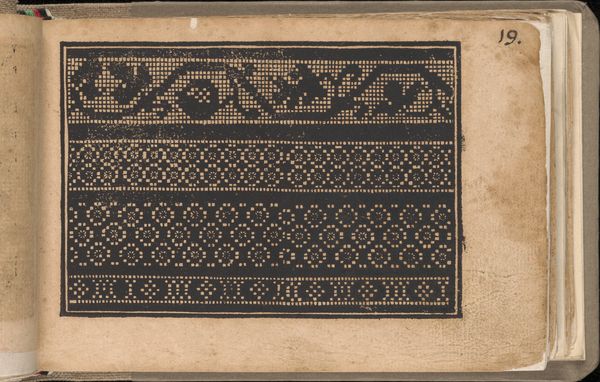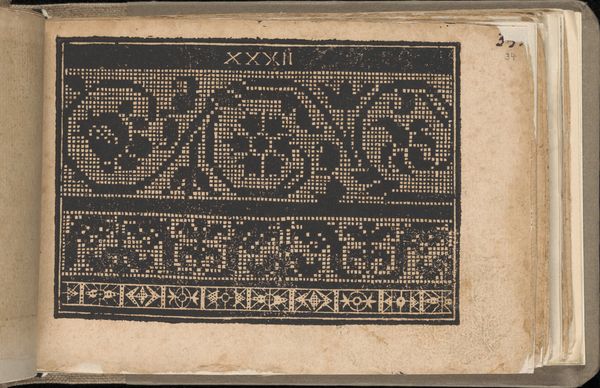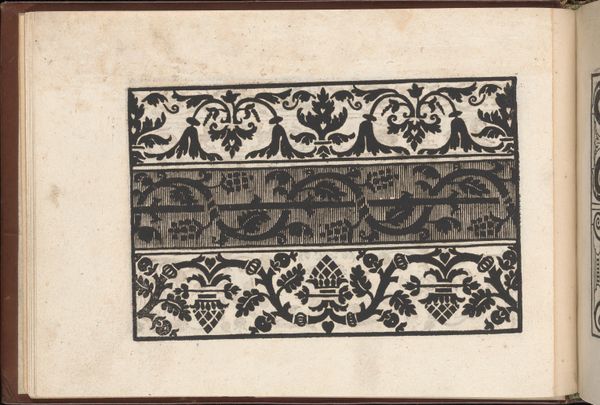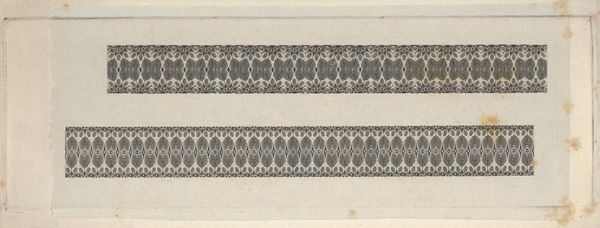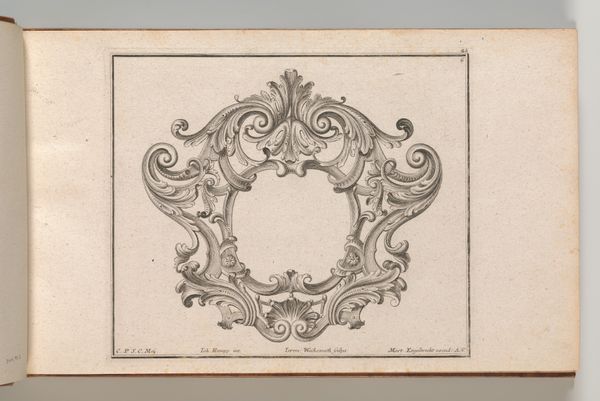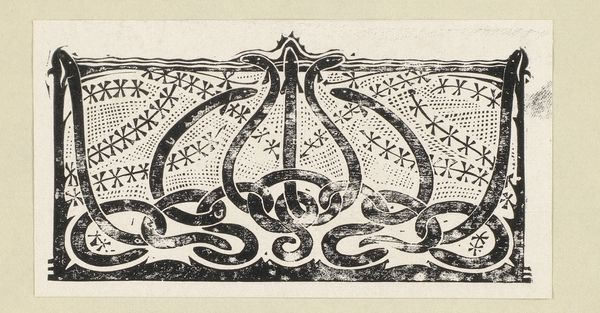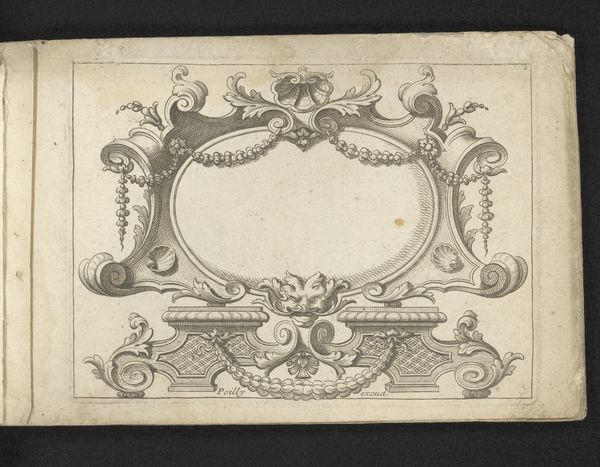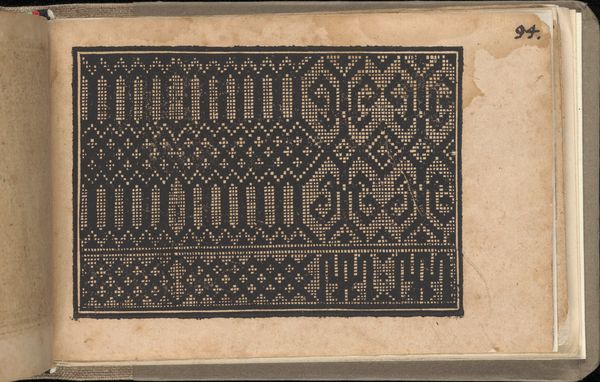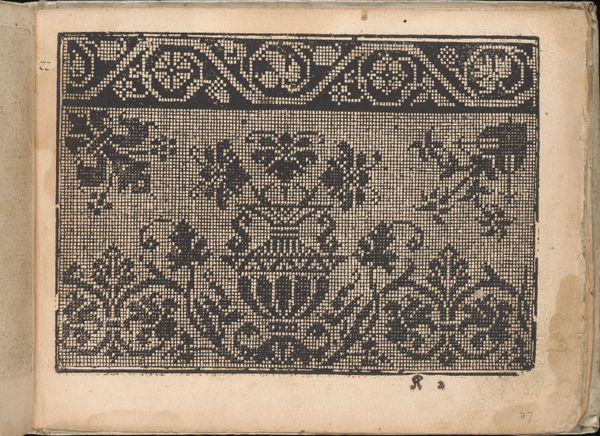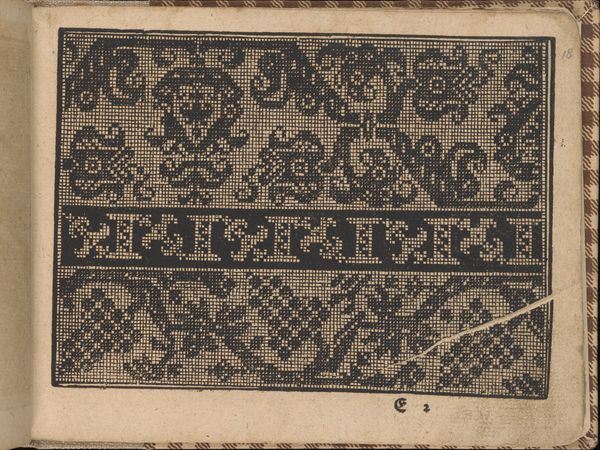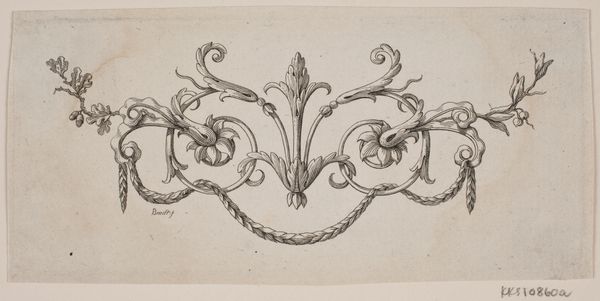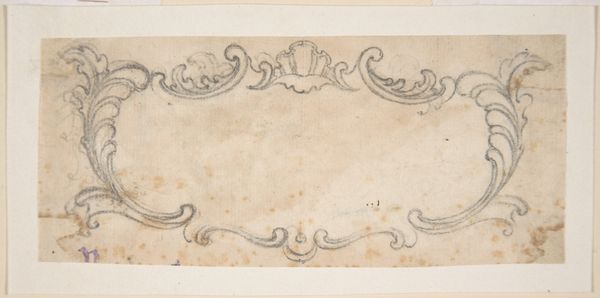
Banknote motif: the word FIVE against a rectangle of ornamental lathe work resembling wavy woven bands 1819 - 1847
0:00
0:00
drawing, graphic-art, print, typography, engraving
#
drawing
#
graphic-art
# print
#
typography
#
geometric
#
embossed
#
line
#
engraving
Dimensions: sheet: 1 1/16 x 3 1/8 in. (2.7 x 8 cm)
Copyright: Public Domain
Editor: Here we have "Banknote motif: the word FIVE against a rectangle of ornamental lathe work resembling wavy woven bands," created by Cyrus Durand between 1819 and 1847, an engraving showcased at the Metropolitan Museum of Art. It feels almost… hypnotizing, this meticulous network. What are your initial impressions? Curator: Immediately, the "FIVE" evokes power structures, of course. But I also consider what *isn't* shown: the larger bill. That absence makes this fragment almost more potent, hinting at wealth and value just beyond our grasp. Do you notice how the ornamental lathe work resembles wave patterns? Editor: Yes! I initially thought of fabric, but you're right, waves work, too. What's the significance of that wavy background? Curator: Consider money's fluid nature, how it ebbs and flows through society, influencing everything it touches. The wave pattern subtly reinforces that constant motion, an endless cycle of accumulation and distribution. The word 'five' seems almost buoyant, riding atop that economic tide. How does that resonance affect your interpretation? Editor: That’s really insightful. I was so focused on the geometric patterns that I missed that. Seeing the word "five" on a currency design, then, we’re really seeing layered symbols of value – numeric, economic, and even aesthetic – being intertwined. Curator: Precisely. The beauty of iconographic study is unraveling these hidden threads. It is all interwoven. An old symbolic language constantly revised and adapted, influencing us still.
Comments
No comments
Be the first to comment and join the conversation on the ultimate creative platform.
